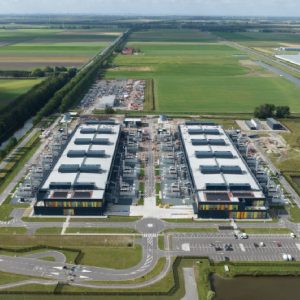
Social networking giant Facebook has introduced a new data centre switch to cater to spikes in data-intensive communications.
The company has unveiled a 100-gigabit switch that connects racks of machines in a data centre.
The new switch, dubbed Backpack, comes several weeks after the introduction of a 100-gigabit switch called Wedge 100.
Facebook said a blog post: “Facebook is making it possible for people to create and share new immersive experiences using video and VR, and by some estimates video will make up 75% of the world’s mobile data traffic by 2020.”
The networking company said that it has already started putting Backpack in production and submitted the specification of the hardware to the Open Compute Project for review.
Backpack is designed to meet challenges faced in migrating infrastructure from 40G to 100G and a need for better cooling system to support 100G ASIC chips and optics.
100G and a need for better cooling system to support 100G ASIC chips and optics.
The firm said: “Backpack has a fully disaggregated architecture that uses simple building blocks called switch elements, and it has a clear separation of the data, control, and management planes.”
With its orthogonal direct chassis architecture, it is expected to improve signal integrity and open up more air channel space for a enhanced thermal performance.
Facebook said that Backpack offers the bandwidth capacity required to meet the rapid growth in its traffic patterns.
Facebook engineering and infrastructure head Jay Parikh was quoted by The Wall Street Journal as saying: “We are announcing today a new 100 gig switch called Backpack … bringing faster bandwidth and better bandwidth to everyone.”
Parikh said that the open standards approach will help in meeting the requirement for a faster, cheaper and better infrastructure that can handle an enormous rise in data.
He said: “It accelerates solving the problem.
“The mission of the company is to connect everyone on the planet.”
Recently, Facebook has created a long-distance networking system called Voyager which can transfer data faster through optical fibre network.
The new data centre network equipment was developed as part of its Telecom Infra Project.






